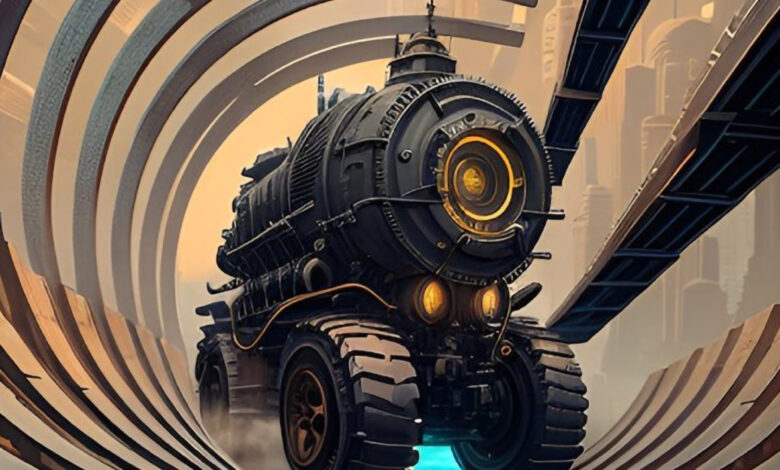
Digital art, a term that has increasingly become part of our cultural lexicon, refers to an artistic work or practice that uses digital technology as an essential part of the creation or presentation process. Since its inception in the 1960s, digital art has evolved significantly, reflecting the rapid advancements in technology and its increasing accessibility. This evolution has not only expanded the boundaries of artistic expression but has also reshaped how we perceive, interact with, and value art in the digital age.
The Genesis of Digital Art
The origins of digital art can be traced back to the experiments of early computer engineers and programmers who explored the creative potential of machines. The 1960s and 70s saw the first instances of computer-generated images, laying the groundwork for what would become a rich field of artistic endeavor. Pioneers like Frieder Nake and Harold Cohen questioned the traditional boundaries of art by introducing algorithms and computational processes into the creative workflow, challenging the notion of the artist’s hand as the sole creator of value.
The Digital Canvas Expands
As personal computers became more accessible in the 1980s and 90s, so too did the tools for creating digital art. Software like Adobe Photoshop and Illustrator allowed artists to manipulate images in ways that were previously unimaginable, opening up a new world of possibilities for digital creativity. These tools democratized the production of digital art, enabling both professional artists and hobbyists to experiment with digital techniques.
The advent of the internet introduced another pivotal shift, transforming how digital art is shared and experienced. Online platforms and social media have enabled artists to reach a global audience, bypassing traditional gatekeepers of the art world such as galleries and museums. This has fostered a more inclusive art community and has allowed for the emergence of digital art forms like net art, which uses the internet as both a medium and a subject of artistic inquiry.
Interactivity and Immersion
A defining characteristic of digital art is its capacity for interactivity, offering audiences not just the opportunity to view but to participate in the artwork. Interactive installations and virtual reality (VR) experiences invite the viewer to become part of the art, challenging passive consumption and offering new ways to experience and interpret creative works. This engagement blurs the lines between creator and audience, art and experience, further distinguishing digital art from traditional art forms.
The NFT Revolution
The recent rise of non-fungible tokens (NFTs) has introduced a new paradigm in the ownership and valuation of digital art. By leveraging blockchain technology, NFTs provide a way to authenticate and sell digital artworks as unique, collectible items. This development has not only granted digital artists new avenues for recognition and financial support but has also sparked debates about the nature of art, ownership, and value in the digital realm.
Digital Art and Society
Beyond its aesthetic and experiential qualities, digital art also serves as a mirror to contemporary society, reflecting our hopes, fears, and the omnipresence of technology in our lives. Artists utilize digital mediums to comment on issues such as privacy, surveillance, digital identity, and the impact of social media, making digital art a crucial part of the broader discourse on the role of technology in society.
Moreover, the accessibility of digital art tools has empowered individuals from diverse backgrounds to express themselves creatively, promoting a more inclusive and diverse art world. This inclusivity is vital in a globalized society, as it allows for a multiplicity of voices and perspectives to be heard and seen.
The Future of Digital Art
As we look to the future, it is clear that digital art will continue to evolve alongside technological advancements. Emerging technologies such as artificial intelligence (AI) and augmented reality (AR) are already being explored by artists, promising new forms of expression and interaction. These technologies will further blur the boundaries between the physical and digital worlds, offering new challenges and opportunities for artists, audiences, and institutions alike.
The evolution of digital art reflects the broader transformations in our digital society. It challenges traditional notions of art, pushing us to reconsider what art can be and what it can do. As digital technology becomes ever more integrated into our lives, digital art will remain a vital means of exploring, understanding, and critiquing our increasingly digital world.
Conclusion
The journey of digital art from its experimental beginnings to its current status as a significant cultural force illustrates the dynamic relationship between art and technology. By embracing the possibilities offered by digital tools and platforms, artists have not only expanded the horizons of creative expression but have also prompted us to think critically about the implications of these technologies. As digital art continues to evolve, it will undoubtedly play a crucial role in shaping our cultural landscape, reflecting our collective aspirations, challenges, and visions for the future.



